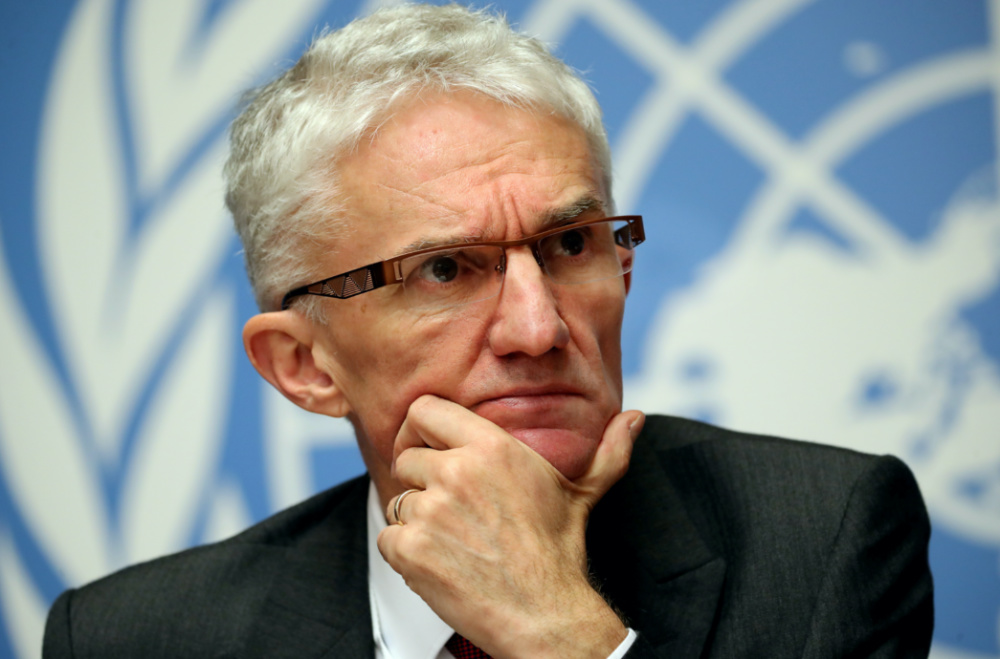Updated 9pm (AEDT)
New York City, US
Thomson Reuters Foundation
The coronavirus pandemic is pushing the number of people worldwide who need humanitarian assistance to survive to new highs, the United Nations said on Tuesday, dramatically increasing the ranks of extreme poverty in just one year.
One in 33 people will need aid to meet basic needs like food, water and sanitation in 2021, an increase of 40 per cent from this year, the UN reported in its Global Humanitarian Overview 2021.

UN Under-Secretary-General for Humanitarian Affairs and Emergency Relief Coordinator Mark Lowcock attends a news conference at the United Nations in Geneva, Switzerland, on 4th December, 2018. PICTURE: Reuters/Denis Balibouse/File photo.
That’s 235 million people worldwide, with concentrations in Syria, Yemen, Afghanistan, the Democratic Republic of Congo and Ethiopia, it said.
“The crisis is far from over,” said UN Secretary-General António Guterres in a statement. “Humanitarian aid budgets face dire shortfalls as the impact of the global pandemic continues to worsen.”
Countries gave a record $US17 billion in 2020 for collective humanitarian response, reaching 70 per cent of the people targeted for aid, an increase of six per cent compared with 2019, the report said.
But the UN warned that it has raised less than half of the $US35 billion needed to stave off widespread famine, fight poverty and keep children in school and called on the world’s wealthy countries for financial contributions.
“The rich world can now see the light at the end of the tunnel,” said UN humanitarian chief Mark Lowcock in a statement. “The same is not true in the poorest countries.”
It said countries around the world had made steady advances since the 1990s in reducing extreme poverty – defined by the World Bank, a multilateral development lender, as living on $US1.90 a day or less.
The UN calculations showing one in 33 people needing assistance compared with one in 45 people this year, already the highest figure in decades, it said.
School closures have affected nine out of 10 students worldwide, with almost 24 million children at risk of not returning to school in 2020, the UN said.
And as the pandemic impedes on food systems, hunger is on the rise, and the UN projected that by the end of 2020, as many as 270 million people will lack reliable access to food.
The cost of meeting food aid needs this year was $US9 billion, up from $US5 billion in 2015, the report said.
The coronavirus has infected 62.6 million people and killed 1.46 million people worldwide, according to a Reuters tally.






